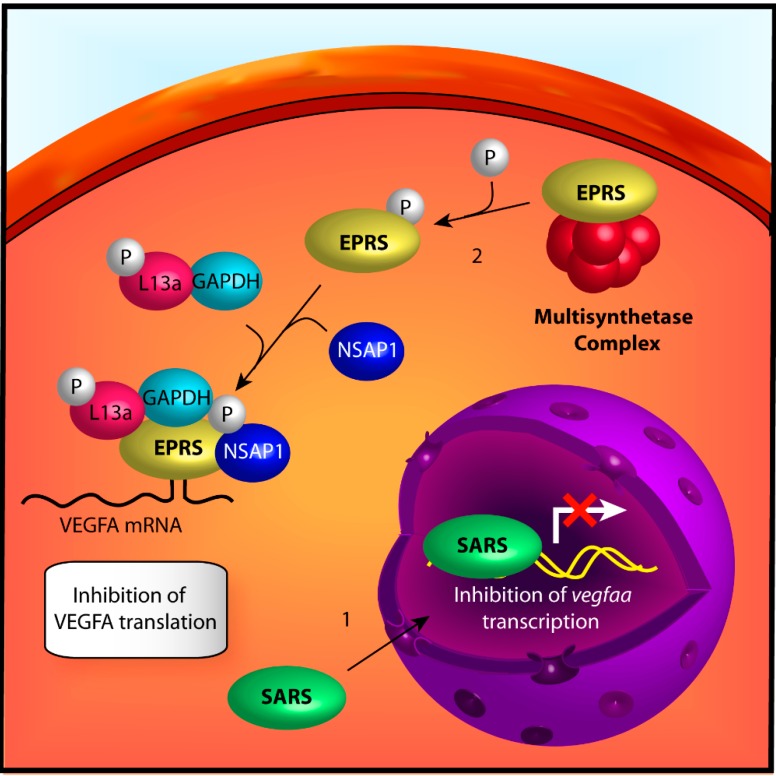Figure 2.
Mechanisms of angiogenesis by intracellularly acting ARS. (1) seryl-tRNA synthetase (SARS) is transported into the nucleus via a canonical nuclear localization sequence (NLS) sequence and binds to the vascular endothelial growth factor A gene (vegfaa) promoter. The binding of SARS inhibits c-Myc-mediated expression of vascular endothelial growth factor A (VEGFA) through modification of vegfaa epigenetics. This effect is angiostatic; (2) glutamyl-prolyl-tRNA synthetase (EPRS) is phosphorylated upon treatment of the cell with IFNγ, releasing it from the multisynthetase complex (MSC). Phospho-EPRS binds with L13a, GAPDH, and NSAP1 to form the interferon-γ-activated inhibitor of translation (GAIT) complex. This complex then binds to mRNA containing stem-loop, 3' UTR GAIT elements via EPRS WHEP domains, thereby blocking their translation. As VEGFA contains a GAIT element, this effect is angiostatic.

